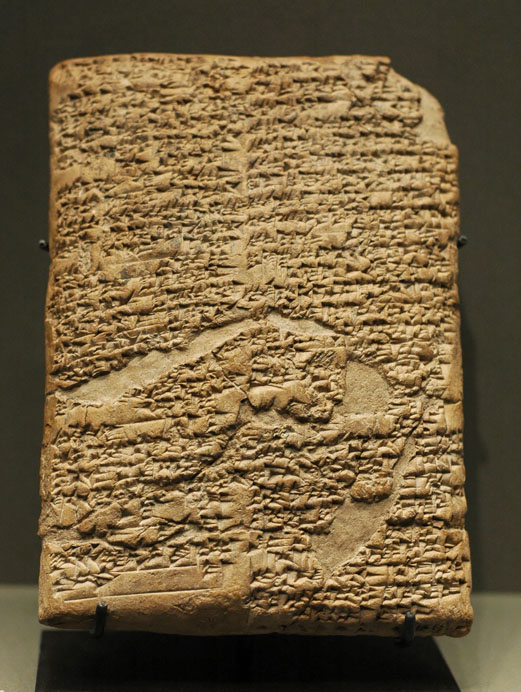Review It
The activity in the Try It page was based on Hammurabi’s Code, perhaps the earliest recorded official laws. This code was among the first created by a leader in an ancient society. Hammurabi was the King of the Babylonian Empire during the 1700s B.C.E. The excerpts you viewed in the Try It activity are from a list of 282 laws for ruling Babylonian society. Tablets such as the one seen here engraved the code for all to use.

This clay tablet contains the first parts of Hammurabi's Code.
Let's review the excerpts and the questions you answered in the Try It page. Click on each topic below to see how the central idea of a source is found, and how a summary is created of a source.
Title: Excerpts from Hammurabi's Code of Laws, 1780 B.C.E.
6. If any one steal the property of a temple or of the court, he shall be put to death, and also the one who receives the stolen thing from him shall be put to death.
8. If any one steal cattle or sheep, … or a pig or a goat, … the thief shall pay thirtyfold therefor; if they belonged to a freed man of the king he shall pay tenfold; if the thief has nothing with which to pay he shall be put to death.
22. If any one is committing a robbery and is caught, then he shall be put to death.
55. If any one open his ditches to water his crop, but is careless, and the water flood the field of his neighbor, then he shall pay his neighbor corn for his loss.
134. If any one be captured in war and there is not sustenance (food) in his house, if then his wife go to another house this woman shall be held blameless.
196. If a man put out the eye of another man, his eye shall be put out. [An eye for an eye]
229 If a builder build a house for some one, and does not construct it properly, and the house which he built fall in and kill its owner, then that builder shall be put to death.
282. If a slave say to his master: "You are not my master," if they convict him his master shall cut off his ear.
In the next activity, you will use what you have learned about finding the central idea and summarizing a source to learn about another ancient civilization.


